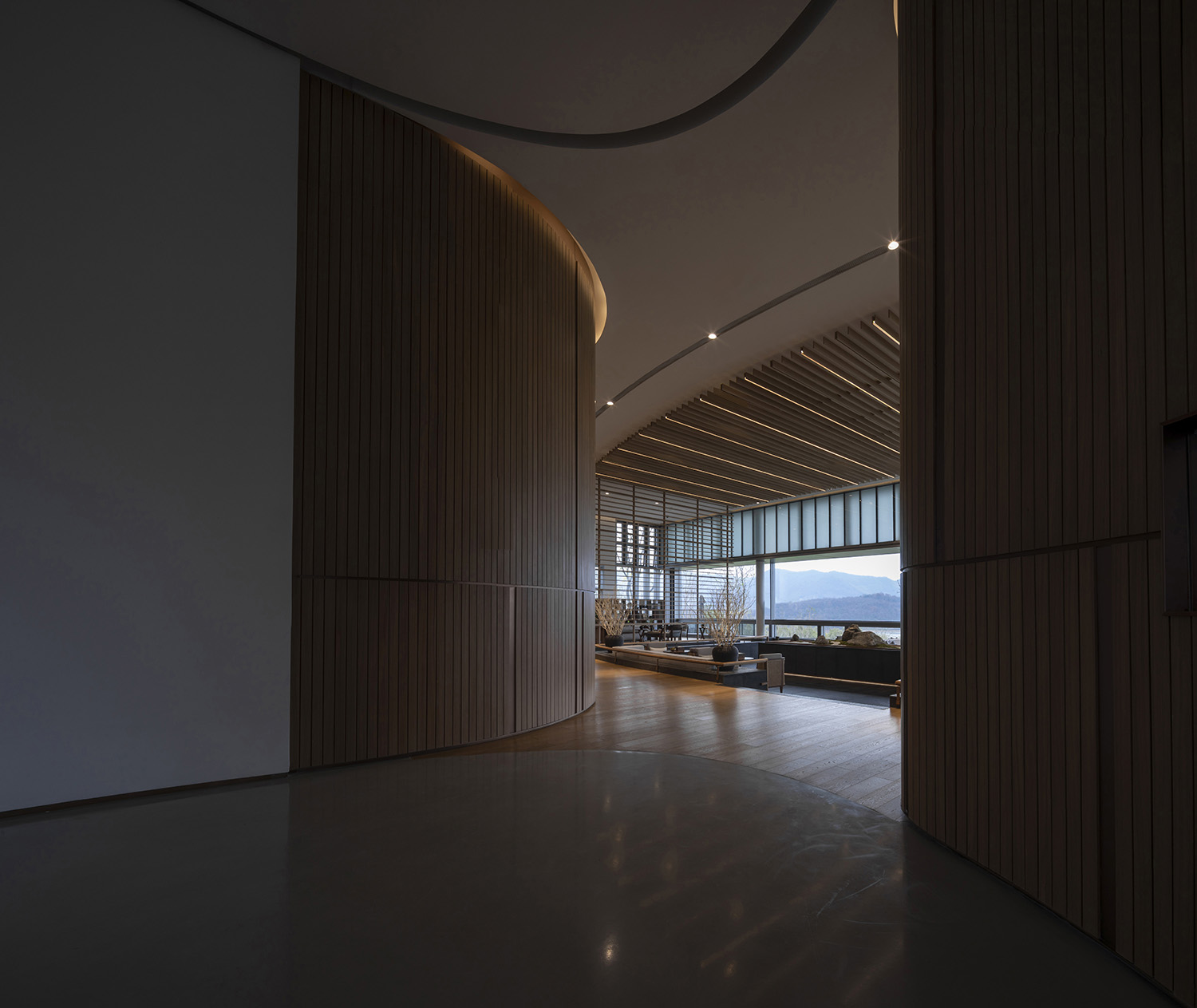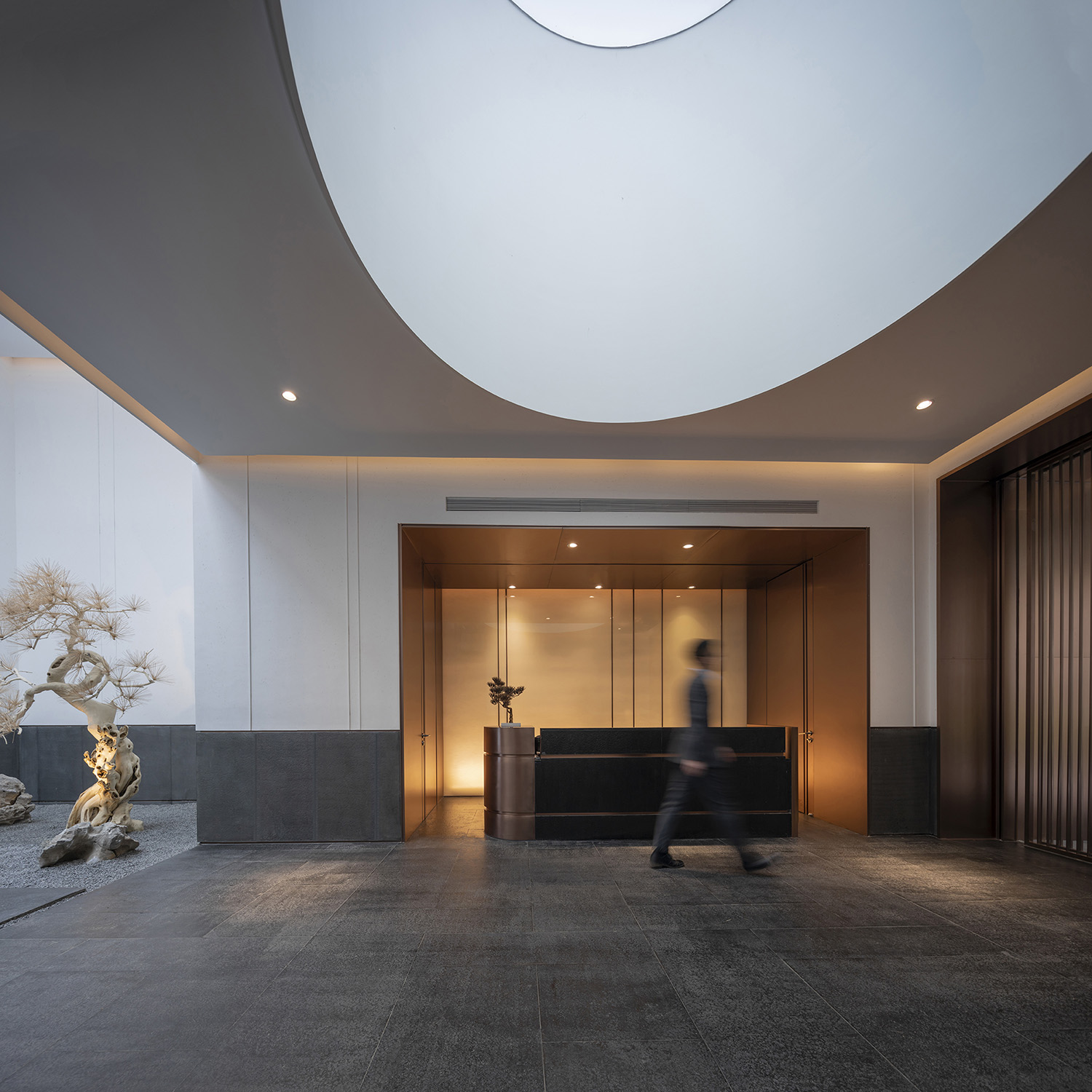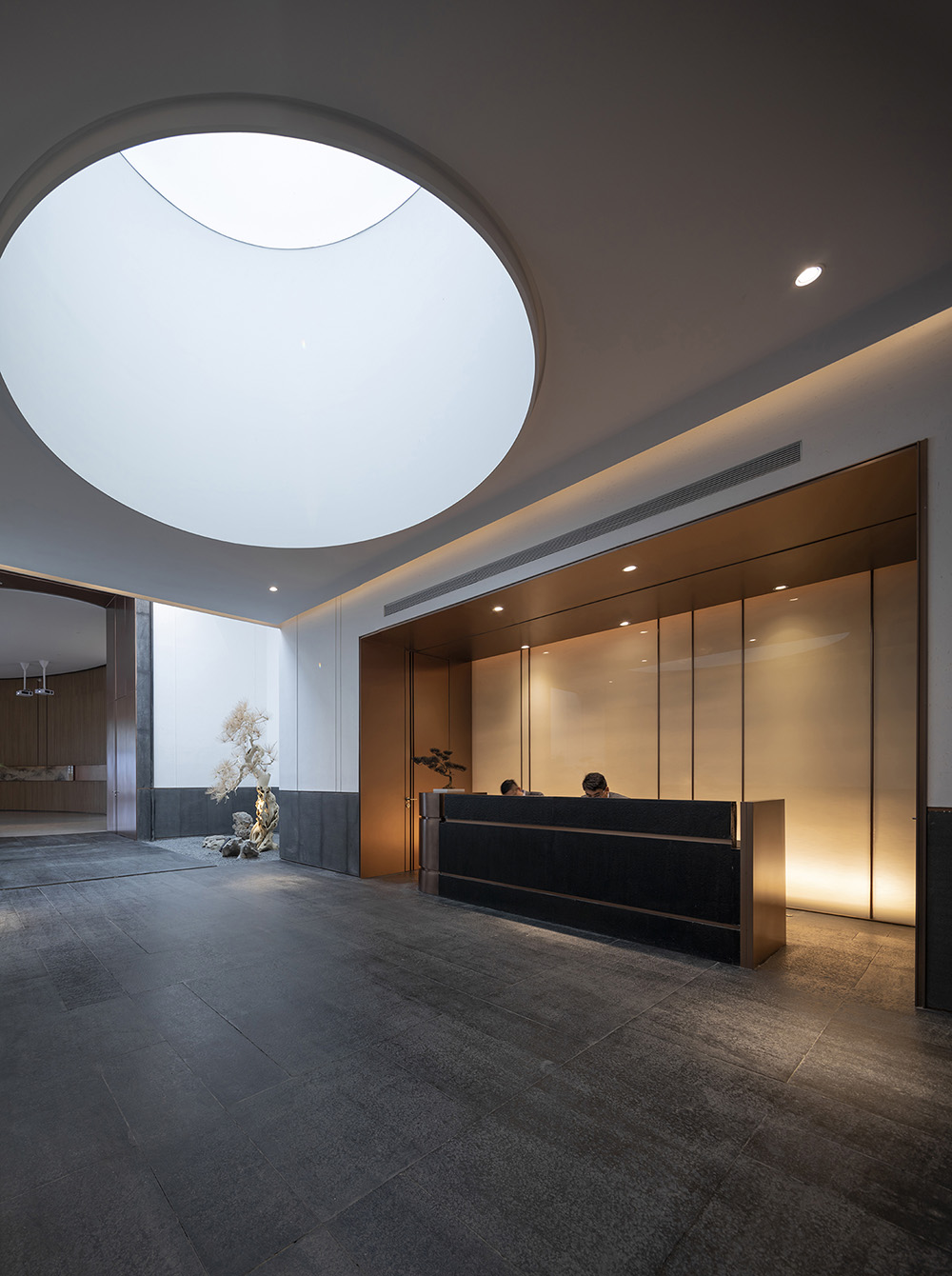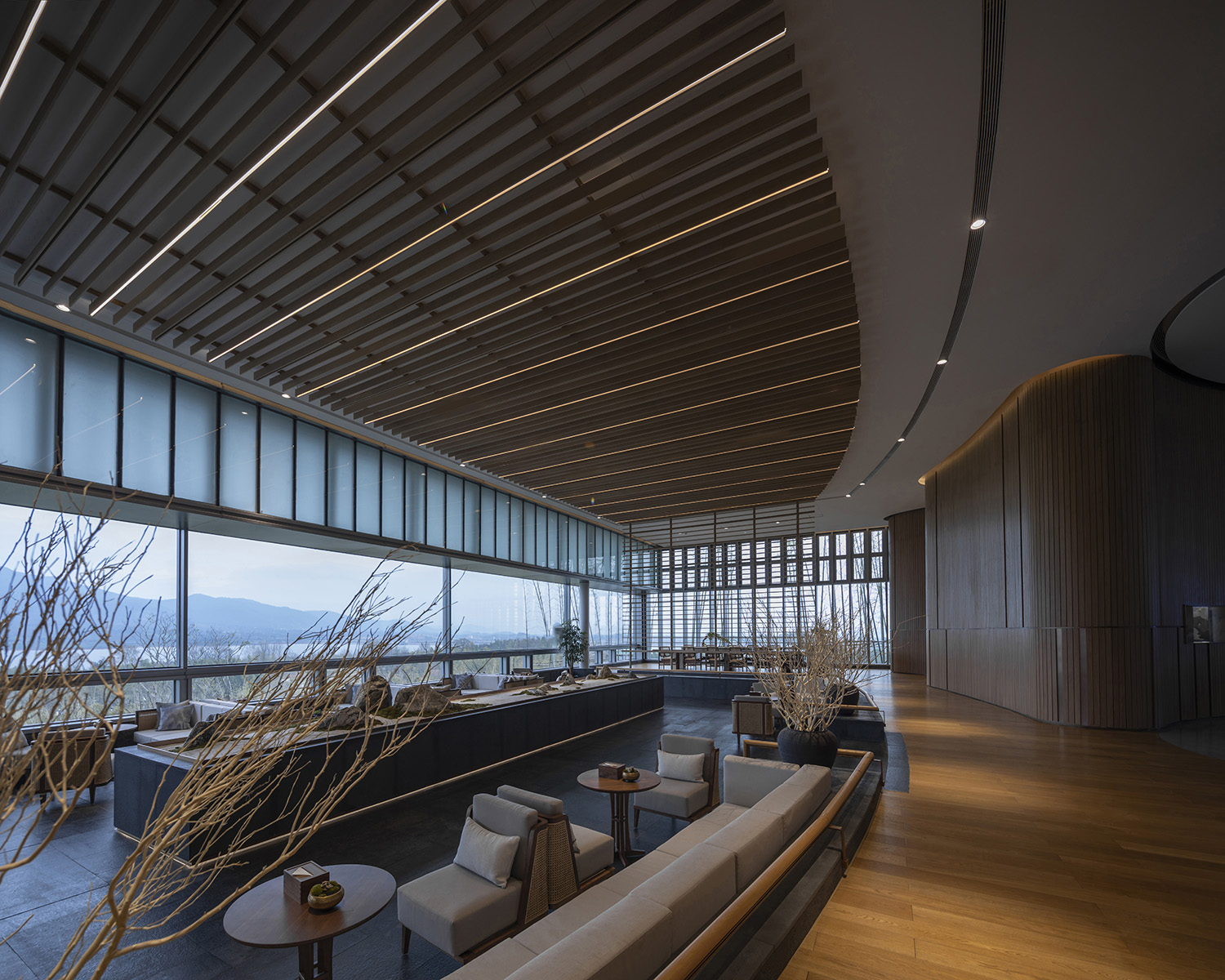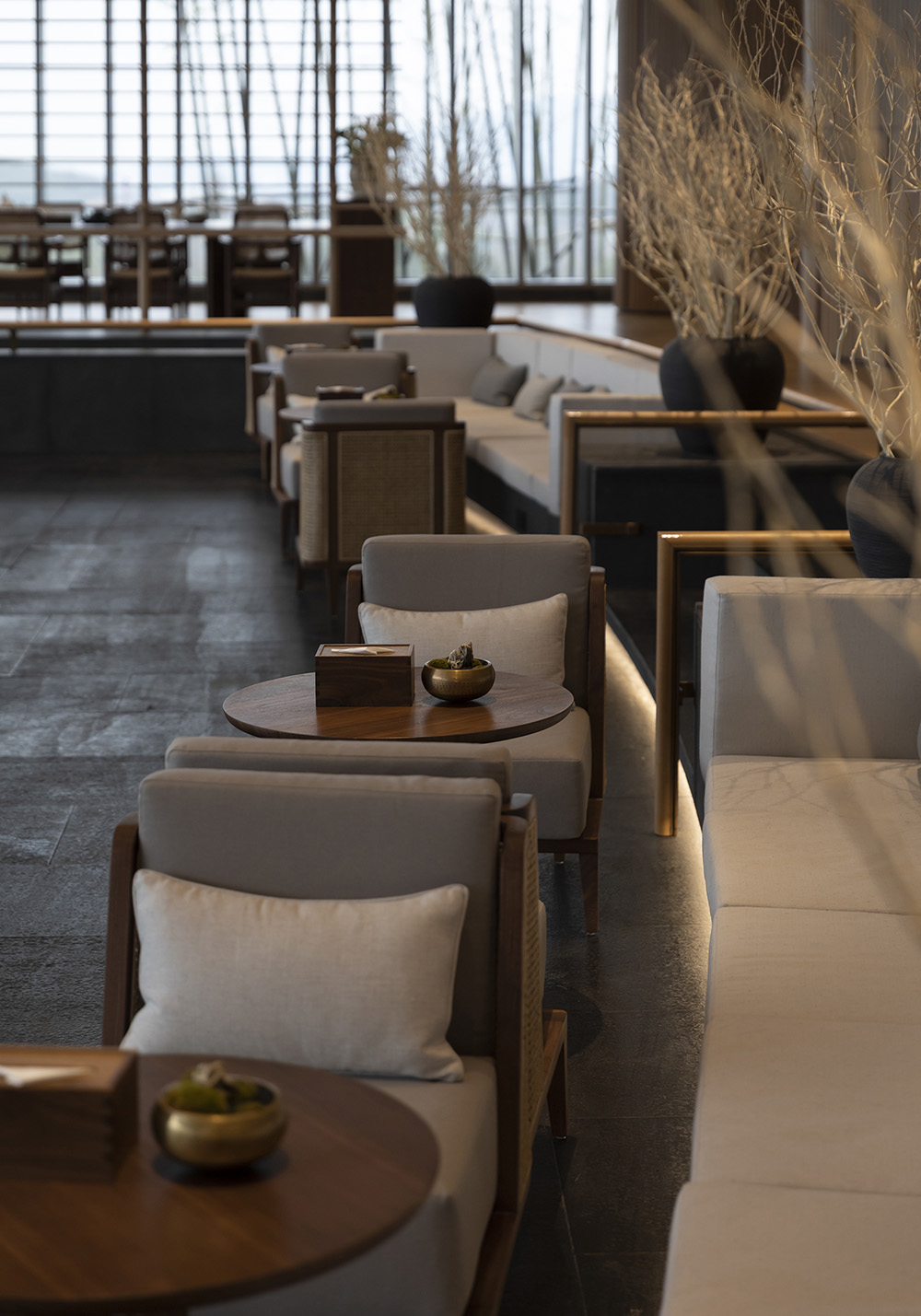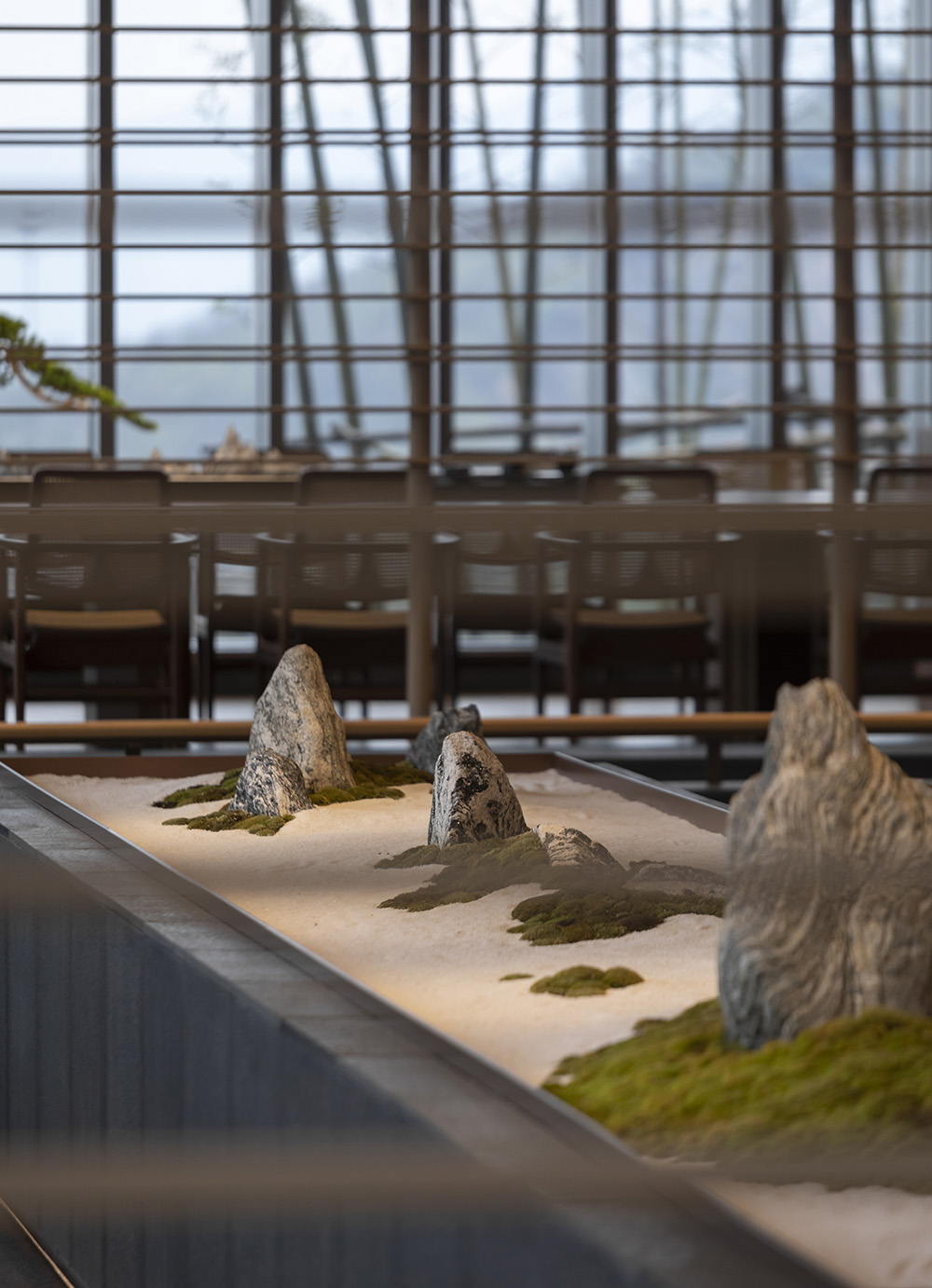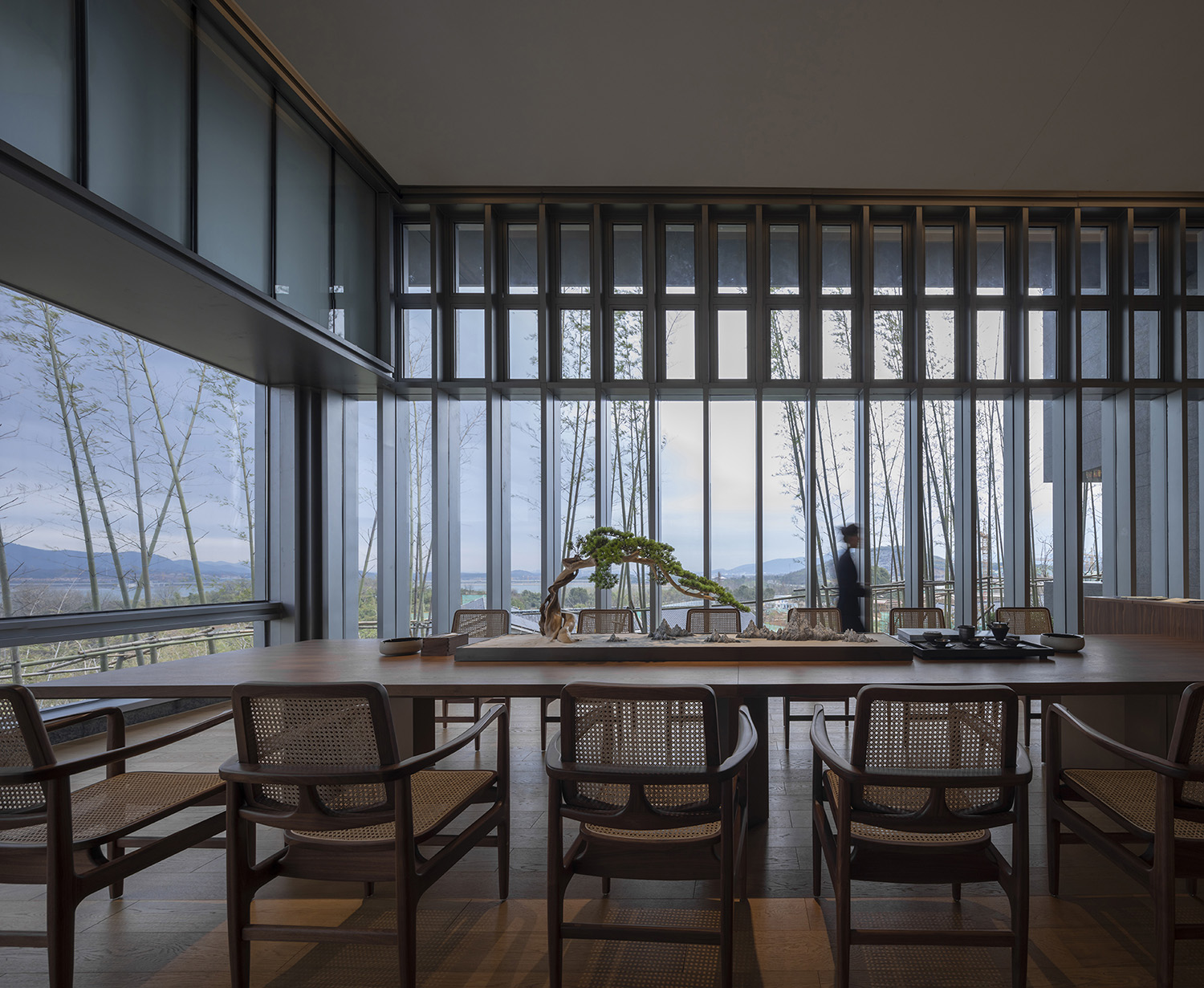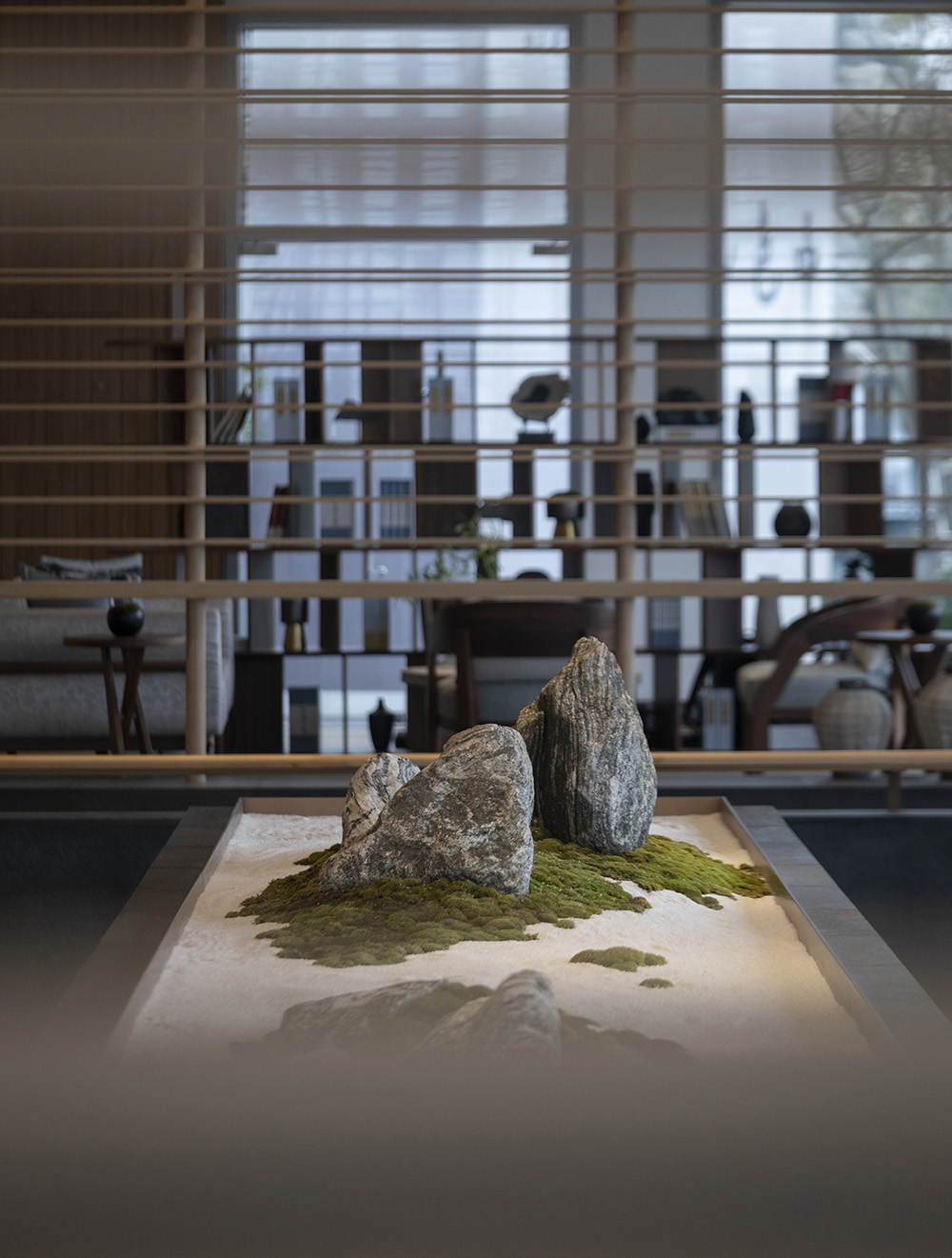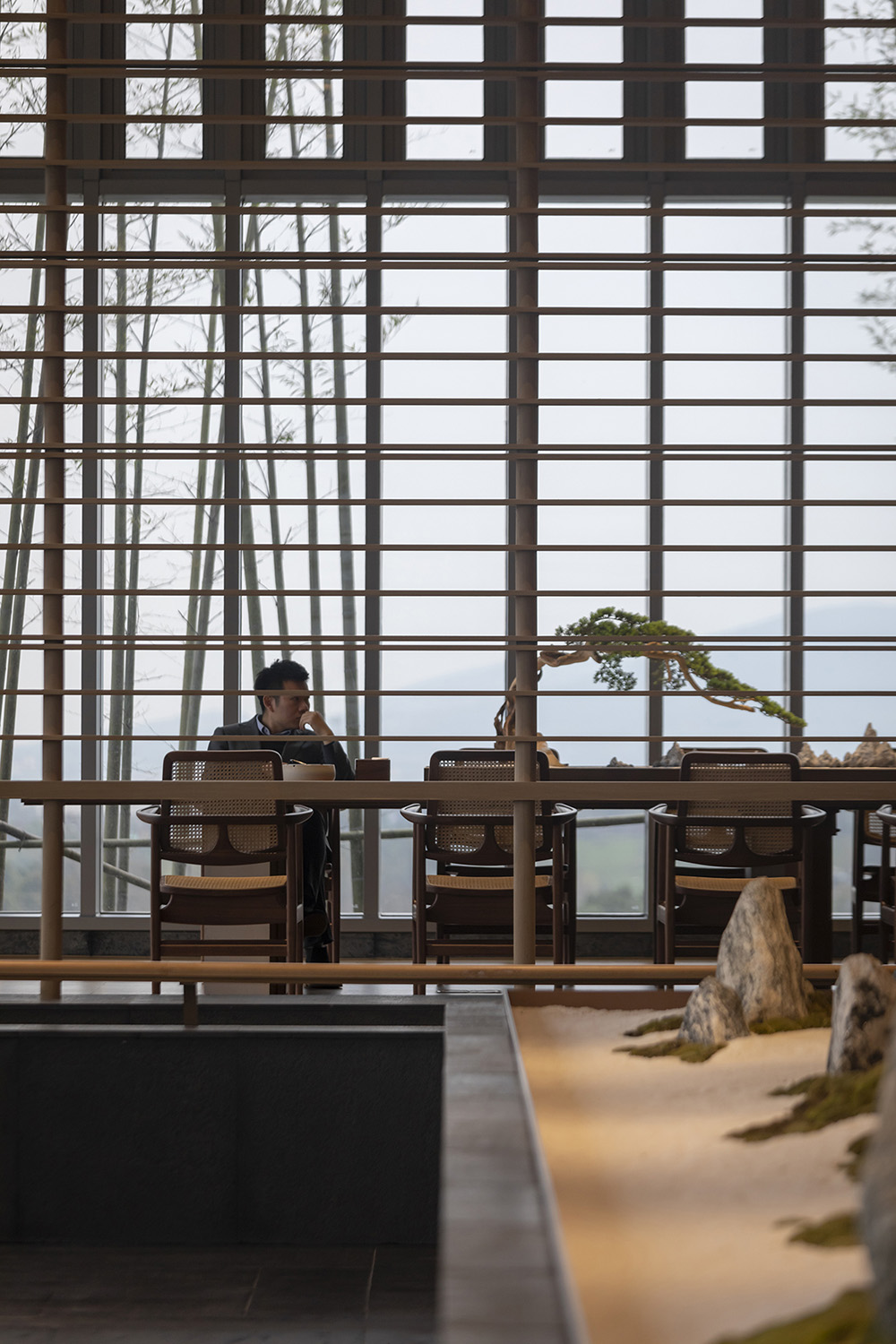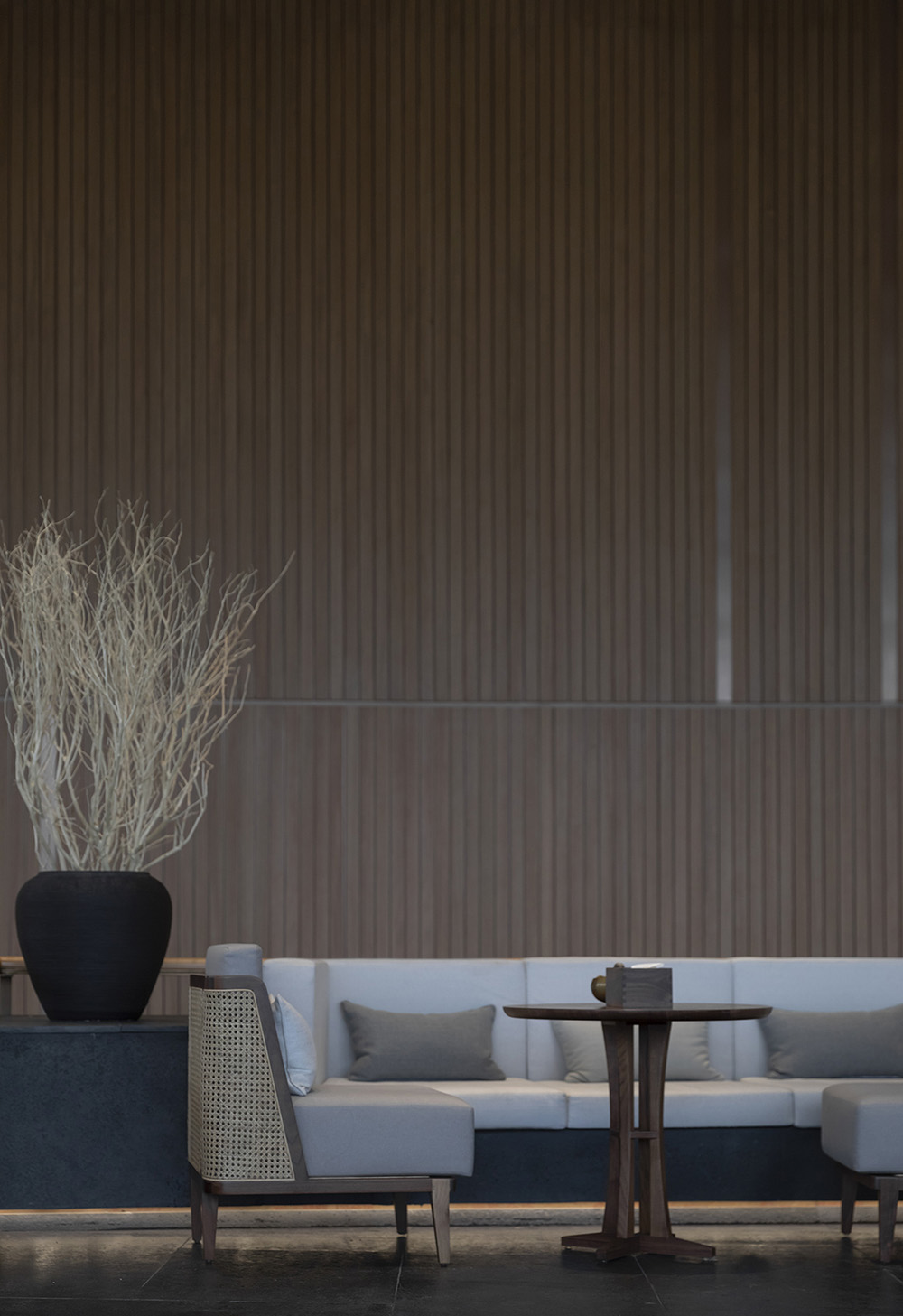Yada Yangxian Xishan is located in Huyi Town, Yixing, Jiangsu Province, which is known as “the only deep oxygen resort in China”. It is adjacent to Taihu in the East, surrounded by mountains on the other three sides, with continuous green bamboo, lush tea fields, and at a glance, the mountains and rivers are like rain and mist.
The building area where the reception center is located is built along with mountains and forests, hidden in the valley, and the surrounding area also retains and uses natural rocks and trees, and integrates with the surrounding natural landscape.
In such an overall environment, Zhile Hu, the architect, hopes to offer a kind of life scene to the users of the space: to introduce the natural mountains and rivers here and create a kind of peaceful mind like hometown.
What we think of as a life scene is not limited to a certain style, but an experience that can be integrated into it.
How to put the concept of landscape into painting and life as poem into reception center?
The presence of natural landscape and becoming them to be the vital role of space.
This is the design concept of the reception center.
The architect Hu, thinks that the space needs to be closely combined with the surrounding buildings, environment, and even object extension needs. The design should start from the heart via using simple language to express the natural expression, and bring it into the detailed design of the space.
China’s landscape culture has a long history, and most of spiritual cultivations are near mountains and rivers. The reception center is slowly unfolding between mountains and rivers, like a painting.
With the landscape as the theme, the landscape between the layers of mountains is replaced into the line of sight. There are different views from far to near, integrating Chinese landscape artistic conception into it.
The structure of the space is also consistent with the surrounding environment, creating the sky, mountains and bamboo forests. The dynamic design of the space also follows the order from dynamic to static.
From the space prelude of the entrance to the space opening of the front, visitors step into the multimedia display area, and finally exhibiting the space of the social area and the sand table.
The daylighting design of the patio at the entrance refers to the natural light, which naturally casts the light into the interior. The design elements of streamline and curve are like the distant mountains and the sky. In combination with the garden elements, the landscape is remolded in the interior, without losing the beauty of details. The purpose is all ingenuity.
The hall adopts a sinking design, with an unobstructed large area of glass window view. It can look directly at the mountain, when visitors standing in front of the window, and admiring a panoramic view of Yangxian lake and the undulating bamboo forest.
In the central exhibition area, a group of mountains and rivers are designed to create a landscape in nature. Between pacing, the mountain scenery and water shape can be seen in front of the vision. In the space, nature will be introduced into the room. At the same time, the nature view properly maps the scale of the distant mountain shadow, and also presents the theme of this design, which is to let mountains and rivers become the leading role of the space.
The shape of the top and partition of the central area is the design evolution of the bamboo curtain. In the natural landscape, the architect hopes to offer more space and humanity. Bamboo curtain also cleverly separated the opening area of indoor space, so that it can also have a relatively independent functional space.




